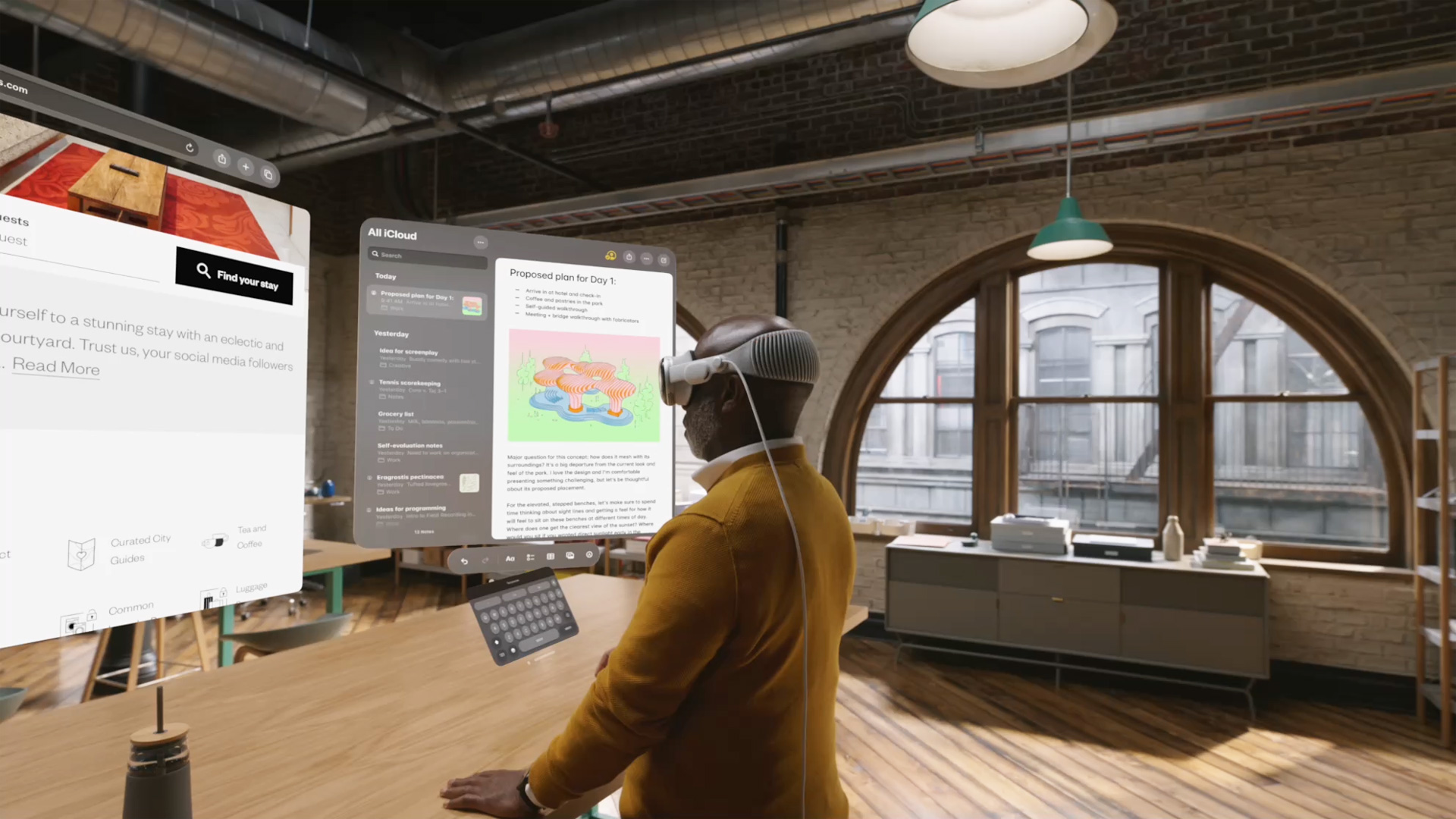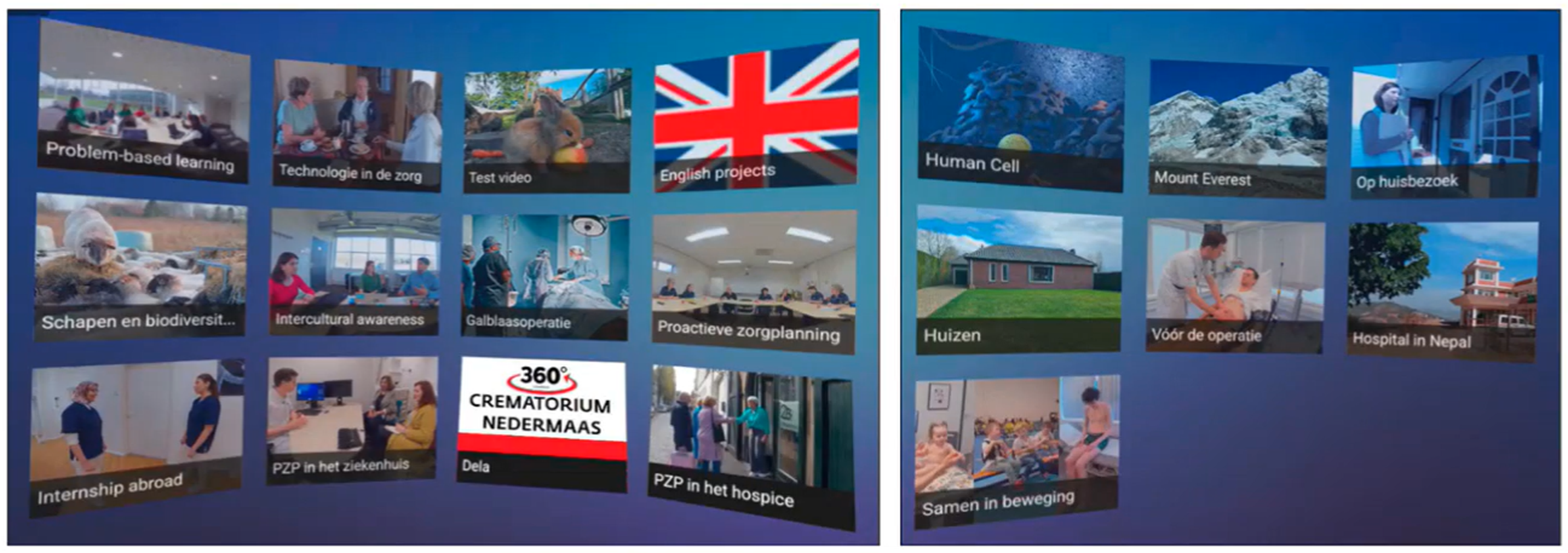While Apple’s new Vision Pro headset is without doubt an impressive and exciting development from a technological standpoint, what is its relevance for education? To what extent does it have something to offer in comparison to other headsets on the market and does it truly justify its considerable $3499.99 price tag?
Although education is mentioned only for the briefest of moments during the Vision Pro’s launch presentation, this does not necessarily indicate the product’s lacking potential within this sector. Indeed, should we briefly cast to one side the problematic factor of its cost, the device may well prove to be something of a game changer concerning the typically tricky subjects of data privacy, interaction, and intuitive usage.
Let’s take a look at how:
Privacy
In contrast with all headsets thus far developed by the current market leader, Meta, biometric eye tracking data recorded on Apple’s Vision Pro is encrypted, never leaving the device itself. Unlike this primary competitor, Apple claims that it will under no circumstances permit hand and eye tracking data to be shared with apps and advertising companies. Although such a data sharing feature may be disabled by Meta’s users, that one can do so is not well promoted in the Quest 2 headset and the action must be performed manually. For Meta, data sharing is the presumed default.
With the Vision Pro too, there remains, however, something of a catch. Although Apple’s desire to elevate privacy standards represents an almost certainly positive step, it must be acknowledged that even with such privacy by design features, the quantity of personal data collected by these headsets continues to be immense. Despite precautions, this aspect of the technology may still pose significant challenges, particularly should educational institutions in possession of headsets gain access to students’ personal information, biometric and otherwise.
Interaction
As a mixed reality headset with the extent of VR immersion altered simply by the turn of a dial, the Vision Pro arguably possesses certain benefits over the exclusively VR Meta Quest 2. When wearing the Apple device, students need no longer be wholly separated from the physical world. Science experiments impractical to perform using physical materials no longer require an entire virtual lab environment, but can take place upon the same tangible work bench as those performed under more traditional conditions. The teacher and their gestures can be seen in a manner to which students are accustomed, facilitating natural communication. Moreover, the students themselves can collaborate comfortably face-to-face, easing much of the social discomfort felt when interacting with classmates in their uncanny valley avatar form.
Intuitive Usage
Without handheld controllers, the Vision Pro grants its users a certain freedom of movement impossible for its Meta equivalents. When teaching subjects which require considerable dexterity, this feature likely presents a considerable advantage in terms of students’ later performance of tasks in reality. While the loss of haptics must be acknowledged, in many fields, this is perhaps a tradeoff worthwhile. Further boosting the case for the Vision Pro’s use in education, this headset could easily be used for research and study owing to its virtual work desk feature which facilitates not only Apple’s Pages and Numbers, but also Microsoft Word and Teams. When faced with such softwares, the average user instantly knows well what to do.
Why the Vision Pro?
This last point is, however, both one of the Vision Pro’s greatest assets and sticking points. If Microsoft Word can be easily accessed through a laptop, why would a student or educator need Apple’s headset? The same question could also be asked regarding the Vision Pro’s compatibility with apps available for iPhone or iPad, the functionality and performance of which will be no different within their new-found AR/VR environment. Although new apps and softwares are being developed for the Vision Pro, what precisely these are, Apple continues to keep close to its chest.
Alongside such concerns come also those regarding what reports often consider to be amongst VR’s greatest benefits: the ability to harness students’ focus. Within Quest headsets, it is physically impossible to check messages or, indeed, to perform any action except those facilitated by the VR environment at hand. With the Vision Pro, this is no longer the case. Able to alternate between AR and VR with the turn of a dial, the user may easily access any apps installed within the headset including those for social media. Accordingly, a certain degree of trust is required. Just as in a wholly non-virtual classroom, students once again have the ability to decide to what their attention is given.
This brings us now to the final yet highly significant question. Does the Vision Pro sufficiently differ from its competitors to justify the financial investment required?
What about Meta?
In recent weeks, Meta has announced that its newest headset, the Meta Quest 3, will retail at the price of $499.99. Despite being far from easily affordable, it’s a comparative bargain. Although this device retains handheld controllers and boasts no feature resembling the Vision Pro’s virtual working environment, it should, however, be emphasised that both headsets share a key common aspect, namely the aforementioned ability to switch at any moment between the worlds of VR and AR.
Moreover, although Meta has previously gotten into considerable trouble regarding the omnipresent concern of data privacy, it has recently been confirmed that Quest 3 users will be able to view the nature of the data collected under three headings: (1) information about you (2) sensor and device data (3) policies. The sharing of this data will be able to be turned either off or on per app. Despite by no means going as far as to encrypt biometric data, this step indicates at least some degree of improvement in Meta’s desire to increase both transparency and user agency in this area. It is a step not a leap, but a step in the right direction nonetheless.
With all of this in mind, would it be sensible for educational institutions to attempt to invest in Apple’s Vision Pro over the Meta Quest 3? Truthfully, this is a decision which each individual and organisation must make on their own yet, regardless of which headset is chosen, considerable technical innovation appears almost guaranteed – an exciting prospect, indeed.
Image: courtesy of Apple. Through VisionOS, apps surround the Vision Pro user within an augmented reality environment.




